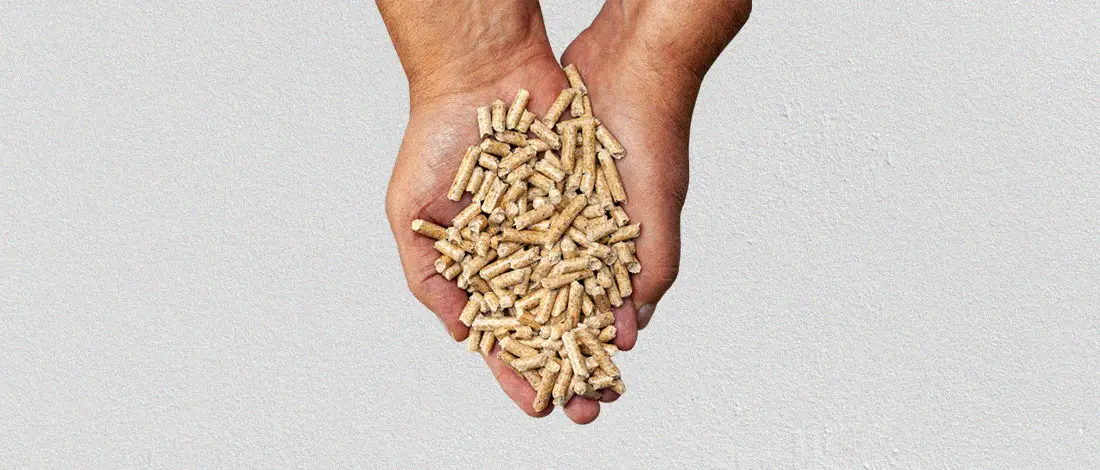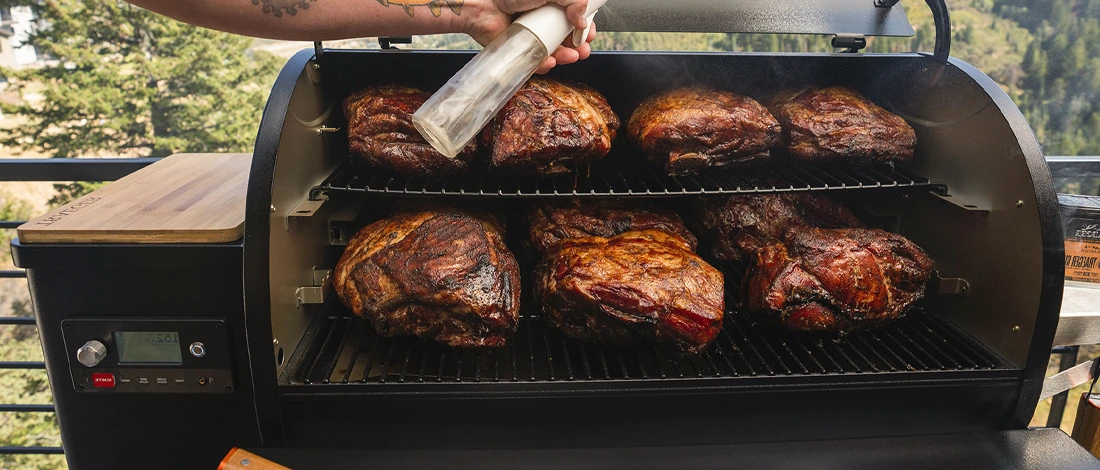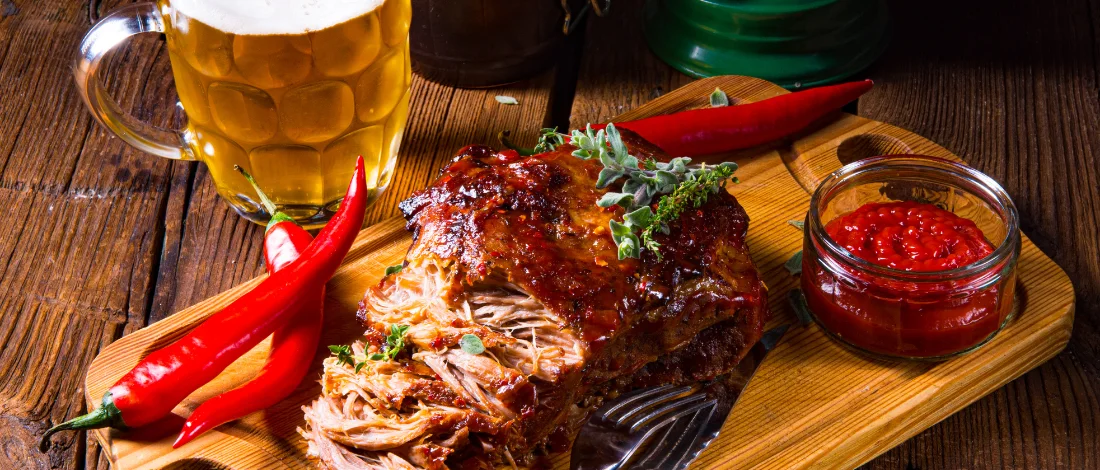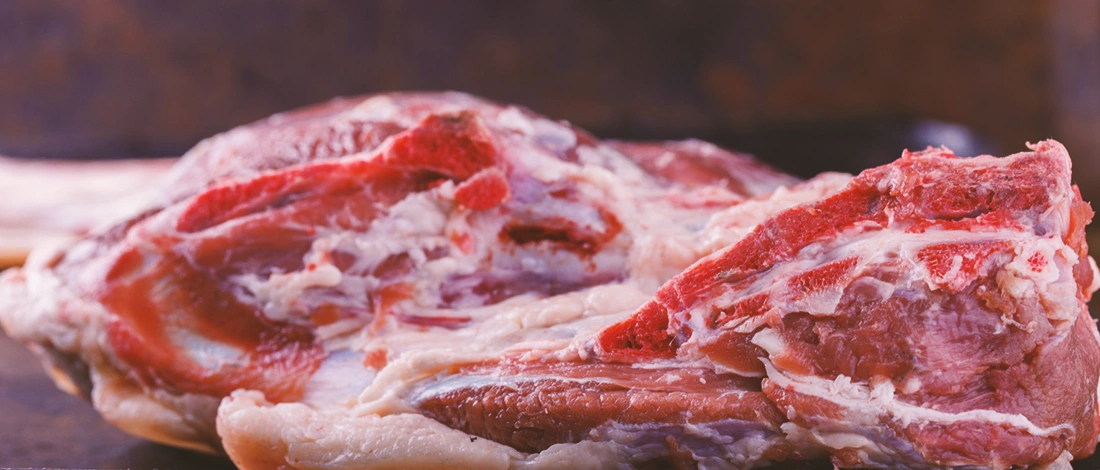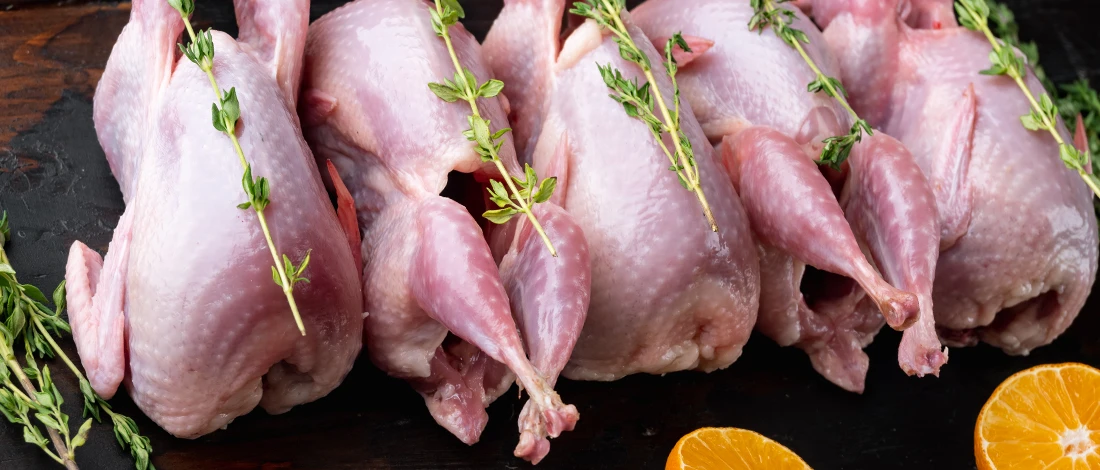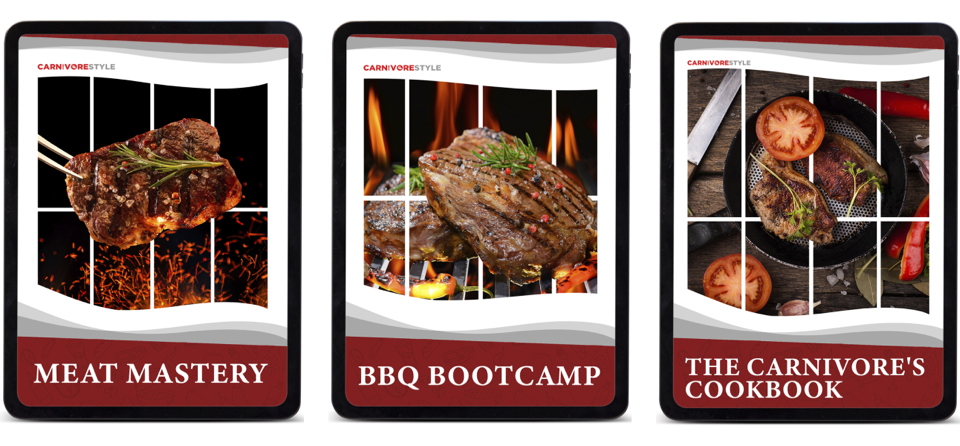Most smoking experts unanimously agree that when it comes to smoking, hardwoods and fruitwoods are generally the best options as they have little sap and resin. Cedar is a conifer like pine and, as such, should not ever be used for smoking meat.
Quick Summary
- Cedar, a coniferous wood, is not suitable for smoking meat due to its high sap and resin content.
- The resinous nature of cedar produces thick white smoke and leaves behind carcinogenic carbon deposits when burned.
- While cedar is not ideal for smoking, it can be used to infuse flavor into certain foods like fish and shrimp when used as a plank for cooking.
This article will focus on understanding why woods like cedar and pine are inherently unsafe to use for smoking and alternative wood fuel options that will deliver the desired flavor without risk.
Why Conifers Are Not Suitable For Smoking Meat
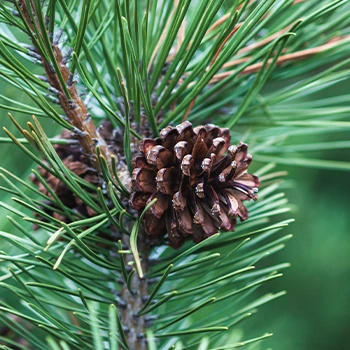
One of the requirements for wood to be used in smoking meats is that it must not have sap and resin.
When you consider the popular recommended woods, you have maple, hickory, beech, and oak as hardwoods, with apple, cherry, and alder as the fruity woods.
You’ll notice that there are no coniferous trees on that list and the reason is that none of those woods have sap and resin.
Those two components are a no-no for smoking meat since they could make people sick.
Resinous Wood Leaves Cancer-Causing Carbon Deposits
The main concern with resinous softwoods like cedar is that they leave behind unburned carbon that becomes carcinogenic when interacting with proteins in food.
This idea that food smoked using resinous woods against hardwoods increases cancer risk is not new.
All smoke has a carcinogen called benzopyrene, but softwoods contain far more significant amounts of this substance. It reacts with the meat proteins to form cancer-causing compounds.
When those unburned deposits or carbon are heated, they create smoke, which adheres to your food and creates a massive health risk. Thus, burning wood with these planks are not suitable for smoking meat.
Health tip: Don’t use lighter fluid or similar fuels to light your fire for the same reason. Instead, go with twigs and paper and start your coals in the chimney.
Cedar Wood Releases Thick White Smoke
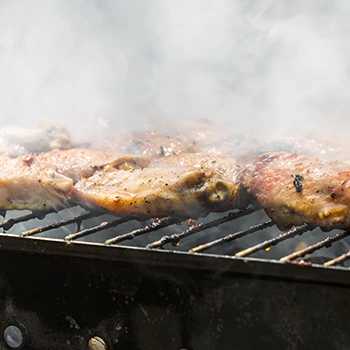
Due to the resin and sap content, cedar plank releases the thick white smoke when it’s burning, and that can create creosote that adheres to your food, ruining the flavor and could make people sick.
The goal of every smoker is to produce the legendary Thin Blue Smoke or TBS, which is an indication of efficient combustion with good airflow and properly suited smoking wood.
Any time you have thick white smoke with hardwoods, it can be for several reasons like having too much fuel or poor airflow, and these can be fixed, but softwoods will release this due to their resinous makeup.
Even if your fire conditions are ideal, adding cedar plank will result in that unwanted dirty smoke, so it is not the best option to use as a smoking source.
Cedar Plank Burns Too Quickly
Another reason that cedar plank is unsuitable and not recommended to smoke meat is that it burns very quickly like most softwoods and, as such, it produces low heat while burning.
Since temperature control is critical when smoking meat, having wood that doesn’t complement the heat from coal will be problematic.
When using dried hardwoods, you only need to add a few small chunks of it to the hot coal bed to produce a clean smoke and deliver that subtle smoky flavor and smoke ring to your meat.
Even if softwoods were not dangerous, they would still be unsuitable as their burn rate is higher than those of hardwoods.
Using Cedar Will Damage Your Smoker
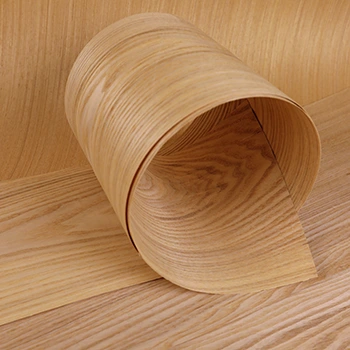
One of the critical components to successful smoking is to use a clean smoker, and if you use these planks, the cedar smoke released as it burns will leave a layer of residue on the inside of your smoker.
Over time, this can build up and become very difficult to remove.
With non-resinous hardwoods, this layer is much easier to clean off, but the resin and sap released from cedar will require more work to remove as it’s stickier and more resistant to cleaning.
As discussed above, when you use your smoker and this layer burns, it will release harmful compounds into the smoking chamber- all things considered, it’s best to avoid using cedar entirely.
How You Could Use Cedar When Cooking Certain Foods
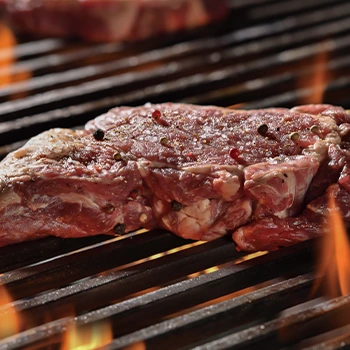
Having a cedar flavor with foods like shrimp and fish can enhance the taste, and by placing these foods on a cedar plank without burning the plank and allowing the steam from the smoke wood to infuse the seafood, you can get that light flavor without any risk to your health.
An excellent example of this is cedar plank salmon which is done by placing the seasoned salmon on a cedar plank that has been blackened on one side by placing it over the fire just to the point of splitting.
Cooking salmon with this method is a delight, making it a rare exception to use Western Red cedar planks.
Cooking salmon with this method is safer to achieve that subtle cedar flavor without the associated risk you would face when using it as direct smoking fuel.
References:
- https://www.masterclass.com/articles/how-to-select-smoking-woods#7-types-of-smoking-woods



